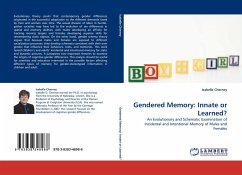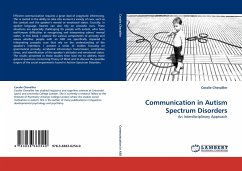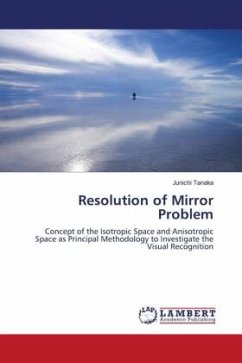
Gendered Memory: Innate or Learned?
An Evolutionary and Schematic Examination of Incidental and Intentional Memory of Males and Females
Versandkostenfrei!
Versandfertig in 6-10 Tagen
32,99 €
inkl. MwSt.

PAYBACK Punkte
16 °P sammeln!
Evolutionary theory posits that contemporary gender differences originated in the successful adaptation to the different demands faced by men and women over time. The sexual division of labor in hunter-gather societies may have led to the evolution of sex differences in spatial and memory abilities, with males developing an affinity for tracking moving targets and females developing superior skills for remembering static objects. On the other hand, gender schema theory argues that because males and females are exposed to different socialization processes, they develop schemata consistent with ...
Evolutionary theory posits that contemporary gender differences originated in the successful adaptation to the different demands faced by men and women over time. The sexual division of labor in hunter-gather societies may have led to the evolution of sex differences in spatial and memory abilities, with males developing an affinity for tracking moving targets and females developing superior skills for remembering static objects. On the other hand, gender schema theory argues that because males and females are exposed to different socialization processes, they develop schemata consistent with their own gender that influence their behaviors, traits, and memories. This work tested children s and adults incidental and intentional memory for static and dynamic pictures. It juxtaposes two important theories to examine the origins of cognitive gender differences. This analysis should be useful for scientists and educators interested in the possible factors affecting different types of memory for gender-stereotyped information in children and adult.












